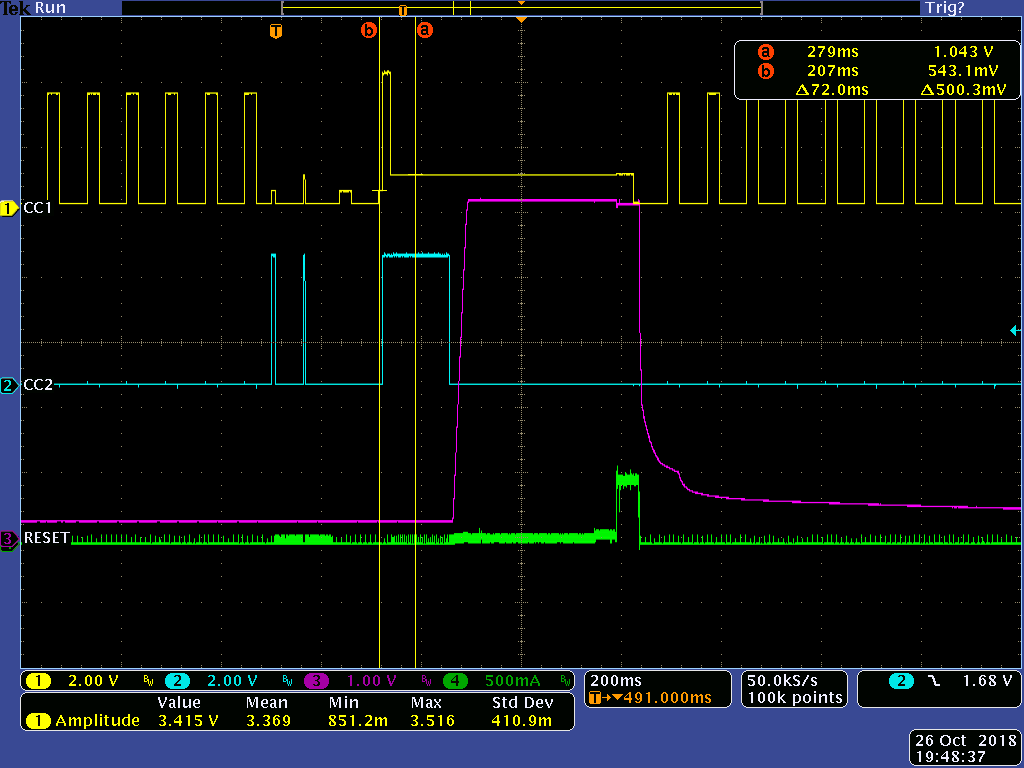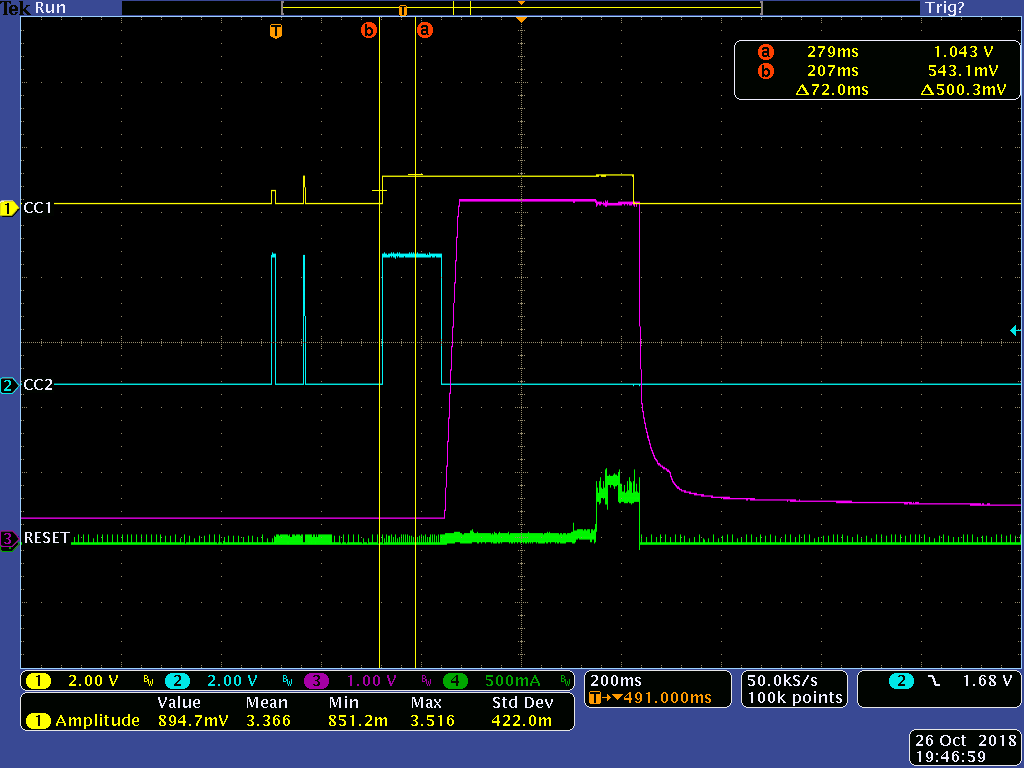Other Parts Discussed in Thread: TUSB320, TUSB320EVM
USB-IF TD 4.3.1 & 4.3.4 Failures
It appears that when the CVS is pulling down the CC1 with Rd with CC2 open the TI TUSB320LAI side is reported by the CVS as having a lot of activity on the CC lines.
Attached is a Word file with a scope capture of a connect of a TUSB320RWBR on an EVM to the TUSB320LAI that is on our device.
The setup is the TUSB320 EVM board REV B configured by dip switches as a DFP connected to the DUT with a TUSB320LAI configured as a UFP with GPIO by pulling the port pin to ground as shown in the schematic segment below. The TUSB320 EVM has a I2C to USB converter attached that is driven by a PC. The test in the first scope capture shows a test where the TUSB320 EVM is commanded via I2C from UFP mode to DFP mode and attaches to the DUT and then changes Rp to set the three current set points.
As can be seen the CC1 trace has pulses on it caused by the TUSB320LAI on the DUT. These pulses are causing the 4.3.4 USB-IF test to fail for Rp not being constant (See captured protocol suite screen capture in the document). It is interesting to note that the TUSB320RWBR chip does not do this when substituted as DUT and it appears that it would pass the test.
Left to Right: First two graticules have CC1 pulsing with a Default USB Current Rp originating from the DUT’s TUSB320LAI. Graticule 3 is the transition from UFP to DFP of the TUSB320 EVM. 8 through 10 are the tests for TD 4.10.1. Yellow – CC1, Magenta - CC2, Cyan – VBUS, Green VBUS current.
It would appear that there is either a design issue with the TUSB320LAI or that it is performing a function that I am unaware of for UFP only operation and my VIF is incorrect.
Any help would be appreciated because we have already purchased 2500 pcs of this device.
TUSB320LAI UFP issues for TI 100918.docx




